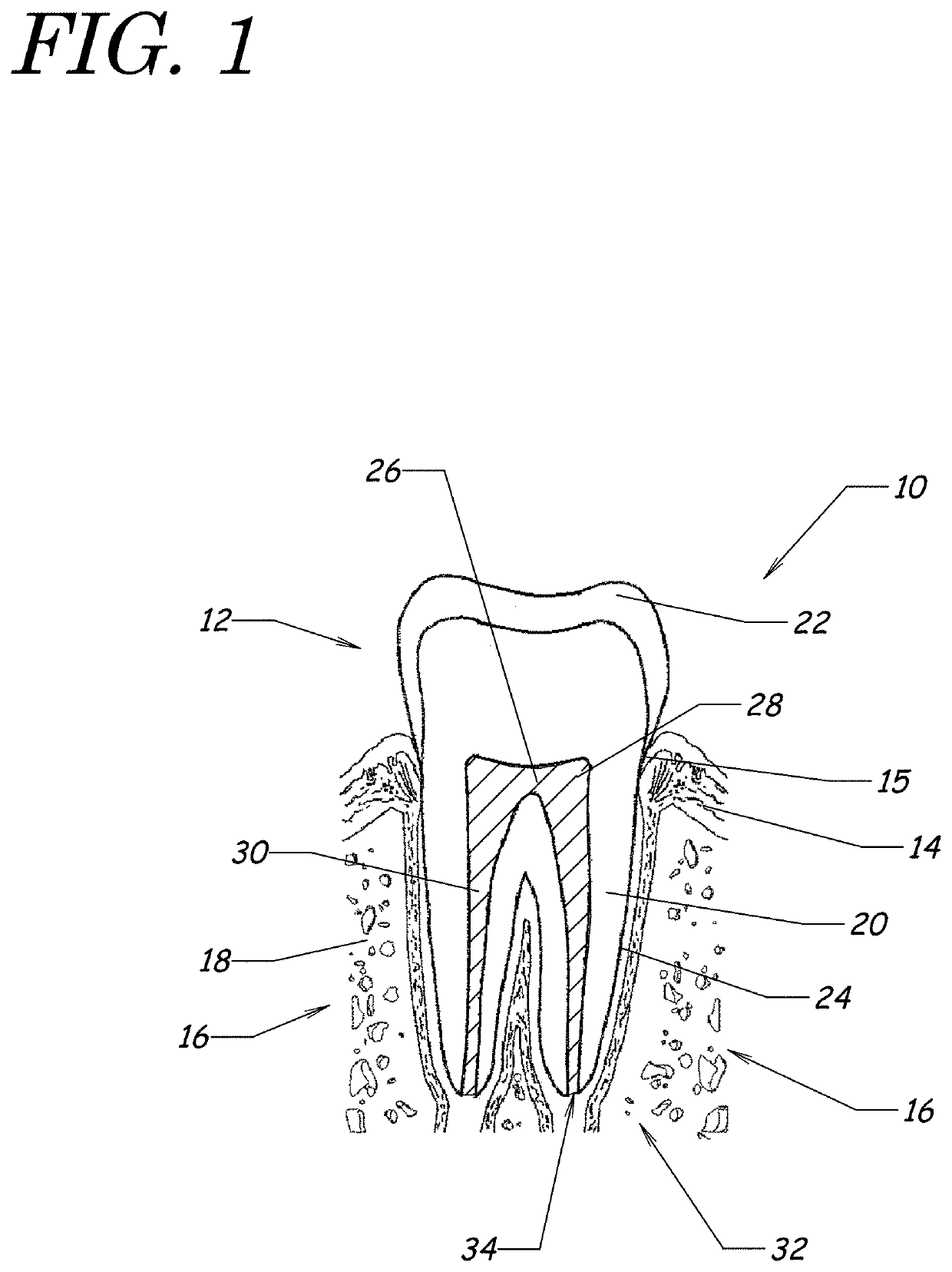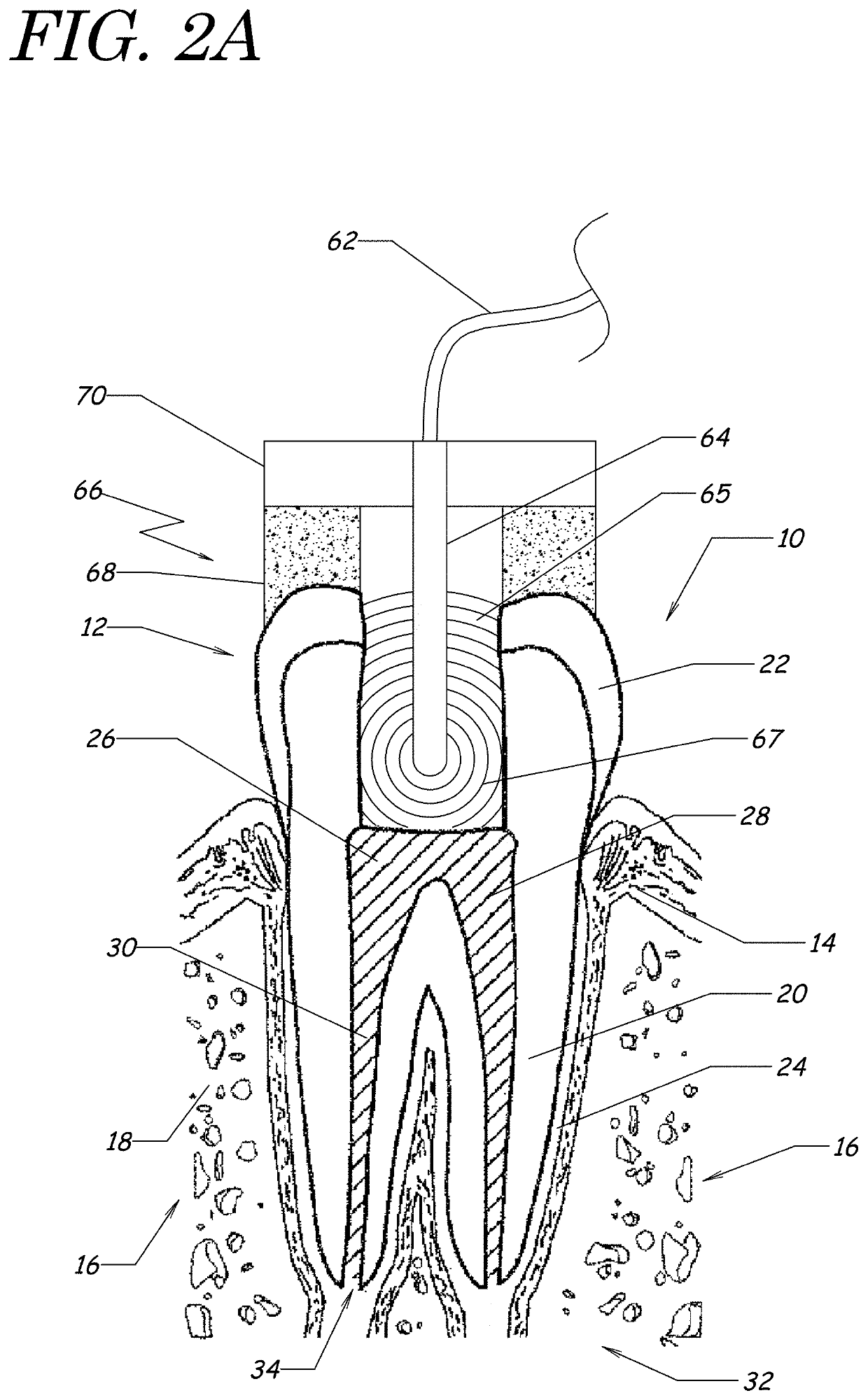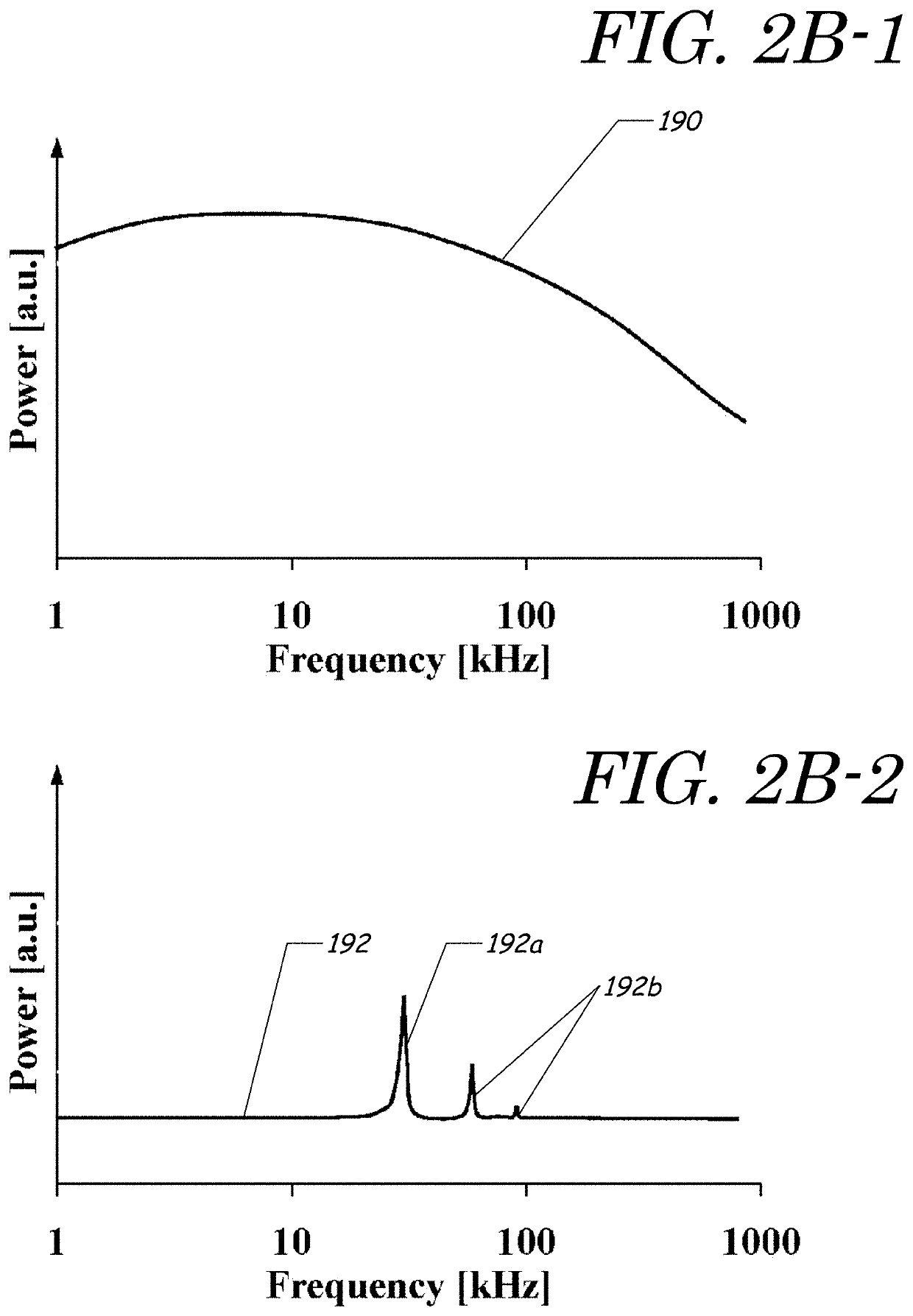Apparatus, methods, and compositions for endodontic treatments
a technology of endodontic treatment and apparatus, applied in the field of endodontic treatment apparatus, methods, compositions, etc., can solve problems such as soft tissue trauma
- Summary
- Abstract
- Description
- Claims
- Application Information
AI Technical Summary
Benefits of technology
Problems solved by technology
Method used
Image
Examples
Embodiment Construction
[0035]The present disclosure describes apparatus, methods, and compositions for performing dental procedures such as, e.g., endodontic procedures. The disclosed apparatus, methods, and compositions advantageously may be used with root canal cleaning treatments, for example, to efficiently remove organic and / or inorganic matter from a root canal system and / or to disinfect the root canal system. The apparatus, methods, and compositions may be used for other dental treatments such as, e.g., tooth cleaning, treatment of dental caries, removal of calculus and plaque, etc. Organic material (or organic matter) includes organic substances typically found in healthy or diseased teeth or root canal systems such as, for example, soft tissue, pulp, blood vessels, nerves, connective tissue, cellular matter, pus, and microorganisms, whether living, inflamed, infected, diseased, necrotic, or decomposed. Inorganic matter includes calcified tissue and calcified structures, which are frequently prese...
PUM
 Login to View More
Login to View More Abstract
Description
Claims
Application Information
 Login to View More
Login to View More - R&D
- Intellectual Property
- Life Sciences
- Materials
- Tech Scout
- Unparalleled Data Quality
- Higher Quality Content
- 60% Fewer Hallucinations
Browse by: Latest US Patents, China's latest patents, Technical Efficacy Thesaurus, Application Domain, Technology Topic, Popular Technical Reports.
© 2025 PatSnap. All rights reserved.Legal|Privacy policy|Modern Slavery Act Transparency Statement|Sitemap|About US| Contact US: help@patsnap.com



